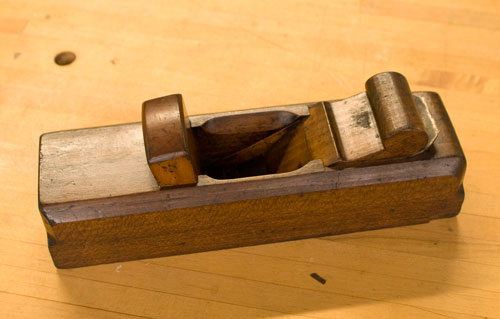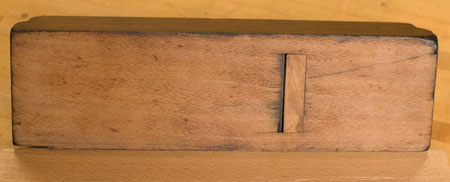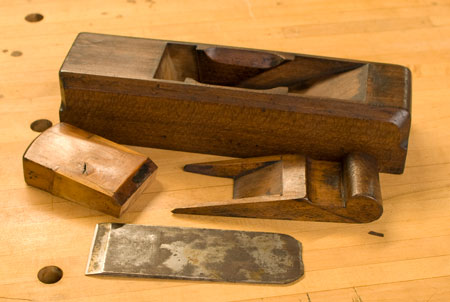|
|
|
 Joel's Blog Joel's Blog |
 Built-It Blog Built-It Blog |
 Video Roundup Video Roundup |
 Classes & Events Classes & Events |
 Work Magazine Work Magazine |
|
Hours: M-F 9:00-5:00, closed Sat,Sun Our Guarantee & Return Policy Shipping and Sales Tax Info Privacy Policy Holiday Calendar |
|
Contact Us:
Email: support@toolsforworkingwood.com Phone: 800-426-4613 or 718-499-5877 Visit Us in Brooklyn: Directions to Our Showroom © 1999-2019 toolsforworkingwood.com Powered by 01 Inc. Coded entirely in NYC |



 In the past few months there seem to have been a lot of interest in wooden, bevel up, mitre planes. There is a fundamental problem with bevel up wooden planes which is that the wood under the iron that forms the bed is very thin and can easily wear, break off, or bulge with wedge pressure ruining the accuracy of the plane. But bevel up wooden mitres definitely existed and were offered concurrently with metal mitre planes. The planes today are very rare and certainly as a design they reflected a dead end.
In the past few months there seem to have been a lot of interest in wooden, bevel up, mitre planes. There is a fundamental problem with bevel up wooden planes which is that the wood under the iron that forms the bed is very thin and can easily wear, break off, or bulge with wedge pressure ruining the accuracy of the plane. But bevel up wooden mitres definitely existed and were offered concurrently with metal mitre planes. The planes today are very rare and certainly as a design they reflected a dead end.  Getting back to wooden planes, Moxon recommends shooting mitre joints with a hand held "Strike-block" plane, which from the illustration in his
Getting back to wooden planes, Moxon recommends shooting mitre joints with a hand held "Strike-block" plane, which from the illustration in his 
What angle is the blade bedded?
Stephen
http://toolemera.com/Trade%20Catalogs/index.html
Peculiar. Unless the Picture Frame plane is actually a mitre for trimming the ends of picture frames parts?
Gary